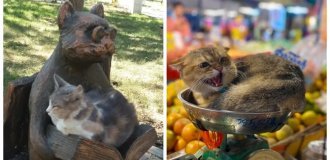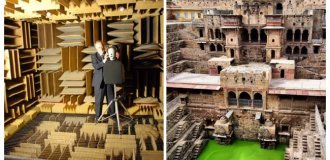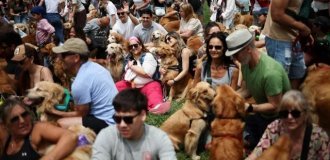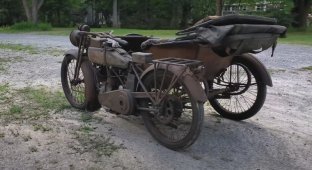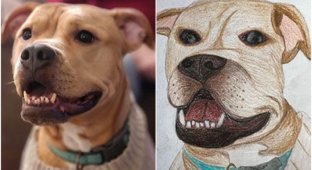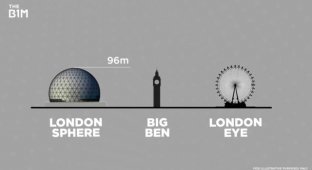A valuable artifact depicting the Kagan of Western Göktürk was found in Kazakhstan (6 photos)
A social complex (Külliye) and new artifacts from the Western Göktürk period have been discovered in Kazakhstan. Among these items, for the first time in history, a belt buckle with the image of a Göktürkic kagan was found. 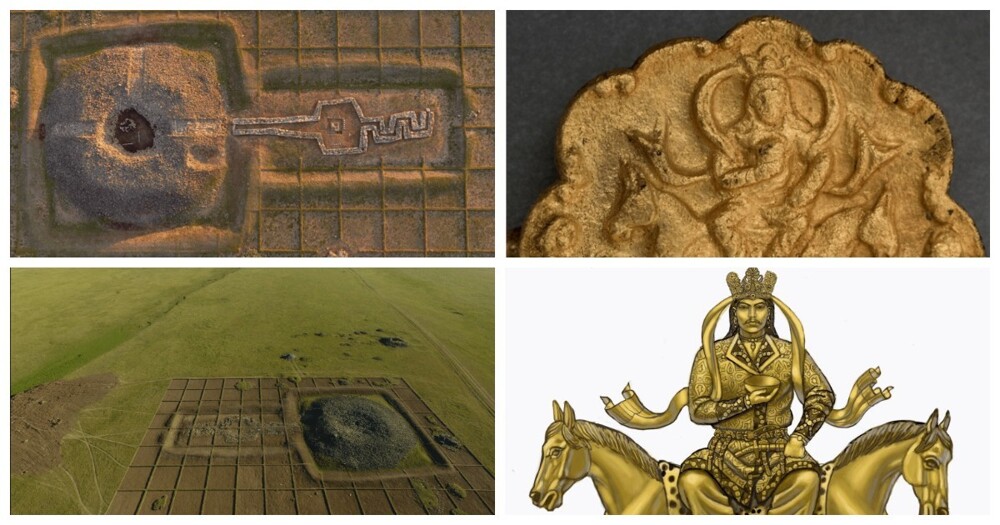
Kazakh archaeologist Zeinolla Samashev, who conducted the excavations and identified the finds, first told the details to TRT Haber (Turkish Radio Television Corporation).
Archaeological work was carried out in the Kurgan region of the social complex of Kagan Eleke Sazy.
Eleke Sazy is a valley in the Tarbagatai district of the East Kazakhstan region of Kazakhstan. As a result of archaeological research carried out in 2016-2018, more than 300 mounds were identified, dating back to a wide period of time from the 9th century BC. e. to 7th century AD e. Particular attention is drawn to the opening of the memorial cult complex of the Western Turkic Kaganate. 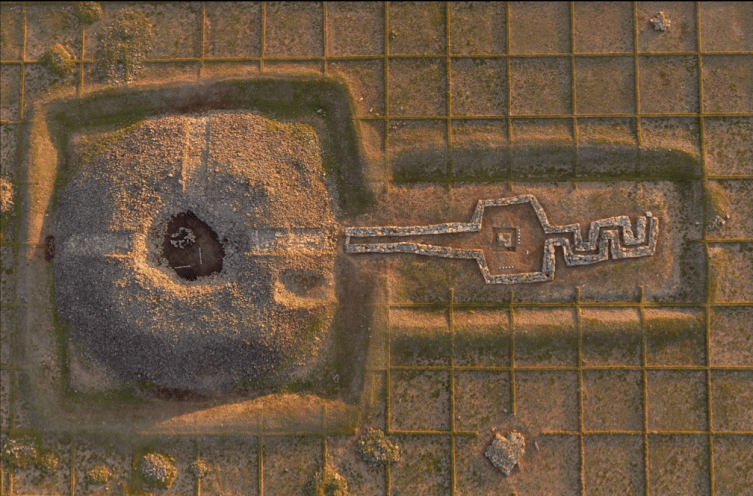
Yeleke Sazy is a significant discovery from the point of view of pre-Islamic Turkic art and archeology, since it is the first and only memorial cult complex of the Turkic Khaganate established outside of Mongolia to date. 
During excavations in 2021, personal belongings of Tegin, an ancient Turkic title with the original meaning of “prince”, who belonged to the Göktürk clan and was appointed to rule the On-Ok province on behalf of the Turkic kagan in Suyab (an early medieval city) were found in the mound area of the kagan Yeleke Sazy complex Chui Valley, located on the Great Silk Road).
For the first time in history, an image of the Göktürkic Khagan was found among these objects.
The similarity of the complex in structure and form shows that it could have been built during the Second Göktürkic State.
“Of course, this center was a complex built in memory of one of the Western Göktürkic Khagans. Later a large mausoleum was built here. This complex is definitely of great importance for the Turkic world in terms of architectural style, funeral ceremonies, finds and religious cult,” says Zeinolla Samashev. 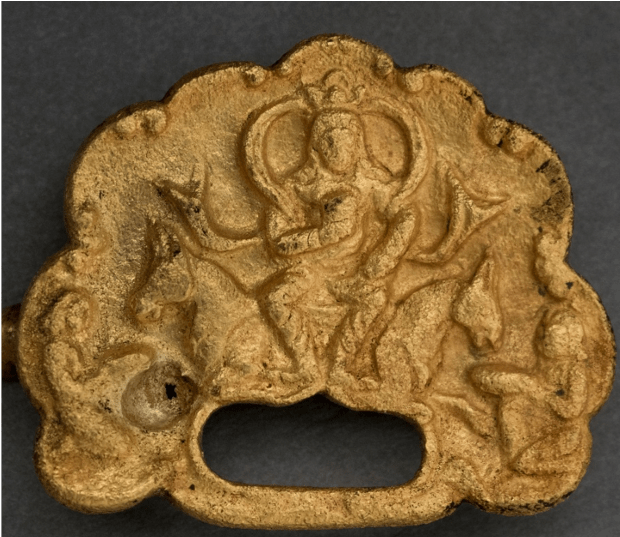
Claiming that the items found in the grave were the personal belongings of the representatives who attended the burial ceremony of the khagan, Professor Samashev said: “If you look at the funeral ceremonies of Göktürk, then personal belongings and weapons were supposed to be placed in the grave of the deceased.”
Among the items found was a belt buckle made of gold plates. The buckle depicts the Göktürkic Khagan sitting on his throne, with a crown on his head and an oath cup in his hand. Professor Samashev emphasized that the discovered ornament is a literary heritage attributed to the Turkic peoples and is of great significance.
Two decorated gold plates, identified as belt buckles, depict the Khagan seated on his throne and his servants serving him. Wearing a gold belt was a sign of dominance in the ancient Turkic states. 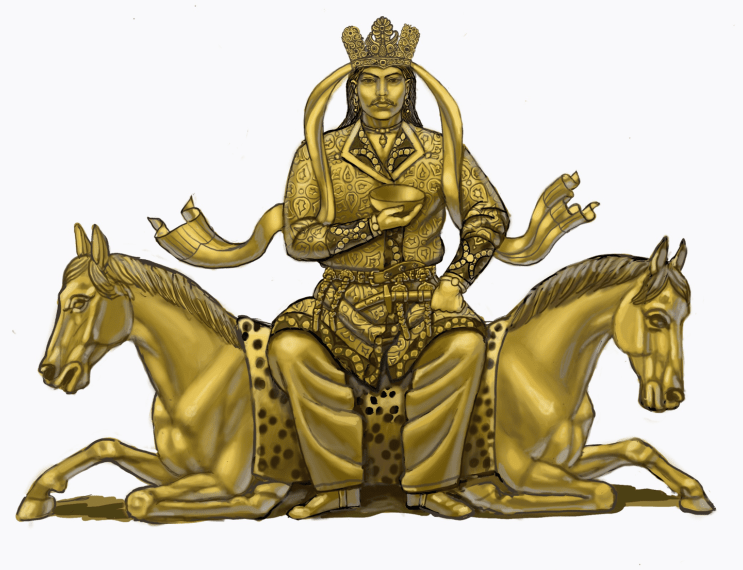
Historian and archaeologist from Ankara University Serhan Çınar says that in the identified images, the Göktürk Khagan has long hair and is about 30-35 years old:
“From the composition of the ornament it is clear that the Kagan is depicted in the traditional Turkic style - sitting with his legs crossed; on his head he has a crown resembling a three-pointed halo. On the buckle of the ornament, the throne on which the Kagan sits and his servants on the sides is also clearly visible. The flowers surrounding the throne are believed to be lotus flowers, which are often used in Buddhist art."
Zeinolla Samashev claims that the belt buckle dates back to the end of the 8th century. Since scientists have information about who the Khagans were at the end of the 8th century, the owner of the belt was most likely one of them. The second option is that the complex where the gold buckle was found belonged to a tudun (governor of the kagan), associated with the kagan of Etyuken or Suyab, the center of the Western Göktürkic Khaganate, and that he presented it as a gift to the ruler’s son. 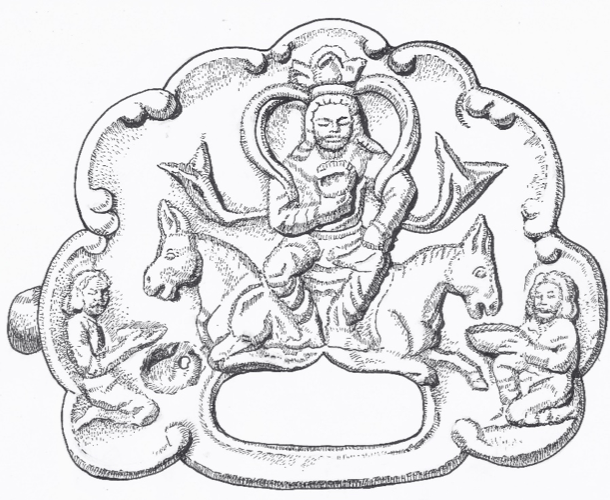
As a result of archaeological research and excavations, it was possible to obtain important information about the features of the architectural plan of the funeral cult complex of the Turkic Kaganate. MemorialThe religious complex consists of a temple, a ritual path and additional structures located in the eastern part. In addition, a statue with all the signs of a Turkic kagan made of granite from the same complex is of great importance.
A granite statue depicting the Göktürkic Khagan or Yabgu sitting cross-legged has been placed under guard at the National Museum in Astana.
The two main parts of the burial complex were surrounded by two separate courtyard walls, but they appear to have a common wall at the junction of the two parts. The dimensions of the burial complex are approximately 90 x 50.90 m, according to the boundaries defined by the courtyard walls, built from a mixture of clayey earth and gravel.



